Author:
Kirill Gaiduk
Changed on:
3 Oct 2025
The Responsive Sourcing Framework is a configurable, scalable alternative to custom Workflows and Rules for managing sourcing strategies. You’ll learn how to define and optimize sourcing logic using Sourcing Profiles, Strategies, Conditions, and Criteria. The Framework empowers both technical and business users with faster implementation, greater control, and transparency into how sourcing decisions are made and why.
The Responsive Sourcing Framework:
The Responsive Sourcing Framework delivers strategic value by addressing key operational challenges in Sourcing:
The following diagram explains the key concepts of Responsive Sourcing and highlights its touchpoints within the Fluent platform:
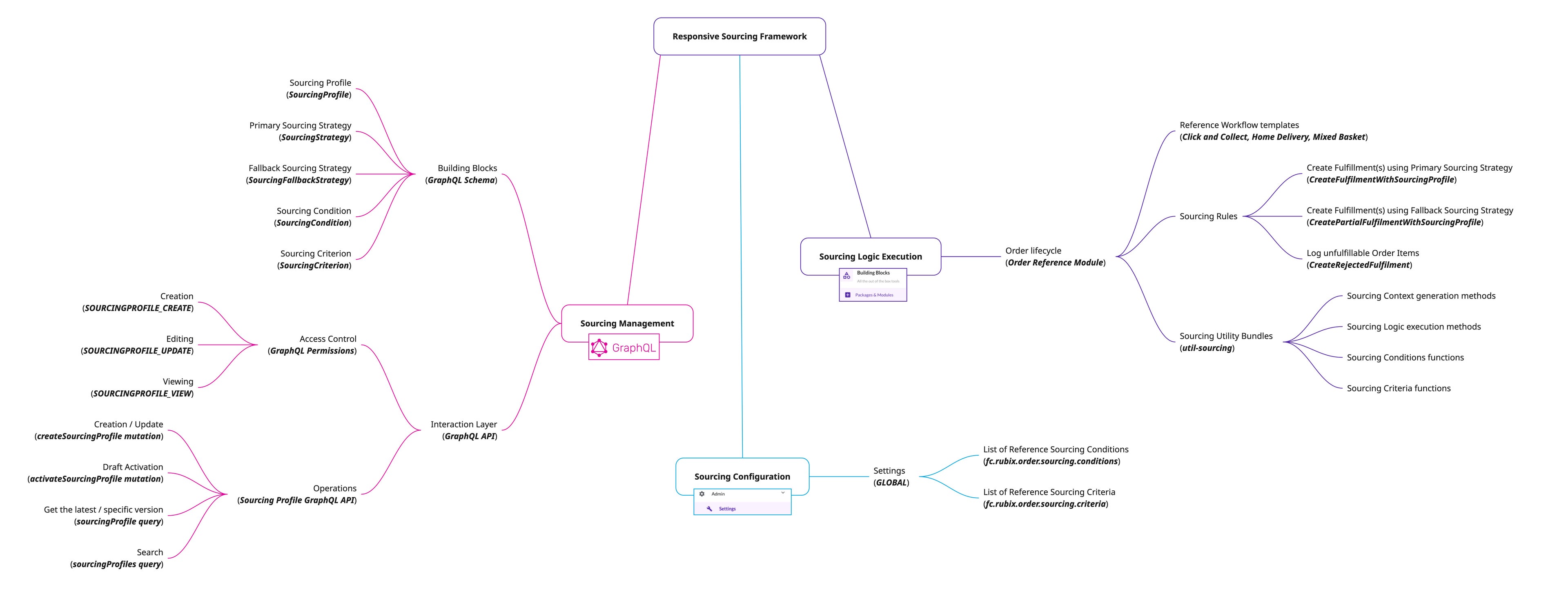
There are five key parts to the Responsive Sourcing Framework that allow you to define, control, and optimize how Orders are fulfilled.
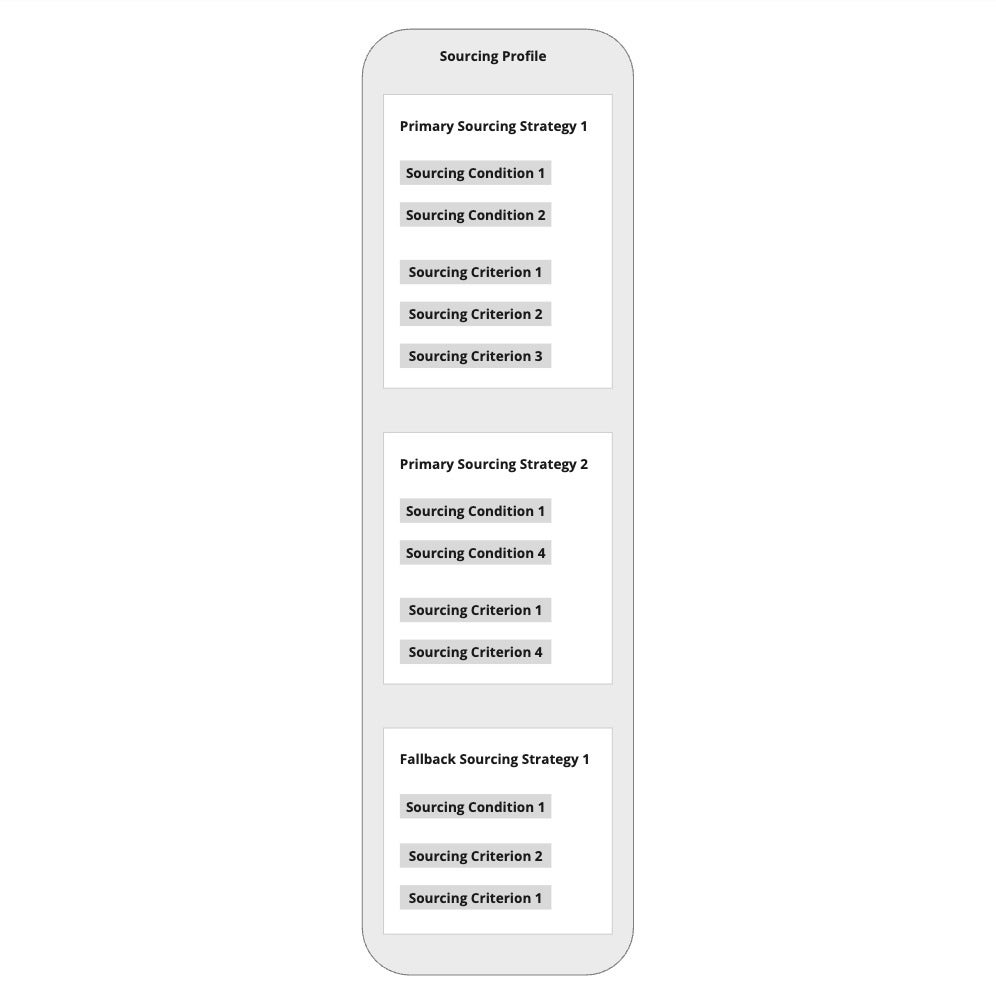
A Sourcing Profile is a structured configuration that groups multiple Sourcing Strategies together to manage Order fulfillment logic.
Think of a Sourcing Profile as the master plan for how Sourcing should work in a particular context - like for a certain:
A Sourcing Profile is referenced within the corresponding Workflow (Order or Availability).
A Primary Sourcing Strategy is a structured approach to determining the optimal fulfillment Location for an Order (or parts of an Order).
Primary Sourcing Strategies are considered in a controllable, priority order, with the Order being sourced by the first Strategy that can fulfill the sourcing request in its entirety.
When none of the Primary Sourcing Strategies can suffice the sourcing request, a Fallback Sourcing Strategy steps in as a backup to ensure fulfillment continues whenever possible.
When creating or updating a Sourcing Profile, Sourcing Strategies can be:
`ACTIVE` or `INACTIVE` Status)A Sourcing Strategy consists of Sourcing Conditions and Sourcing Criteria.
A Sourcing Condition is a boolean function, determining whether a Sourcing Strategy applies.
It acts as a filter, checking things like the Order creation date, Delivery country, Customer tier, or Product Category (i.e., Sourcing Context) to decide if a particular Sourcing Strategy is relevant.
Multiple Sourcing Conditions are evaluated using "AND" logic:
Each Reference Sourcing Condition uses an operator (like “in,” “exists,” or “greater than”) to match values.
A Sourcing Criterion refers to a ranking function used to calculate ratings and prioritize fulfillment Locations within a Sourcing Strategy.
A Sourcing Criterion helps the system decide where to fulfill the Order from. The combination of multiple Criteria can be seen similar to a scoring system: each Location gets a rating, and the higher the number, the better.
Sourcing Criteria are applied in sequence:
Reference Sourcing Criteria can evaluate factors such as distance to Customer, available Inventory, Network priority, and other business-relevant metrics.
The following data model outlines the Entities available to manage Sourcing:
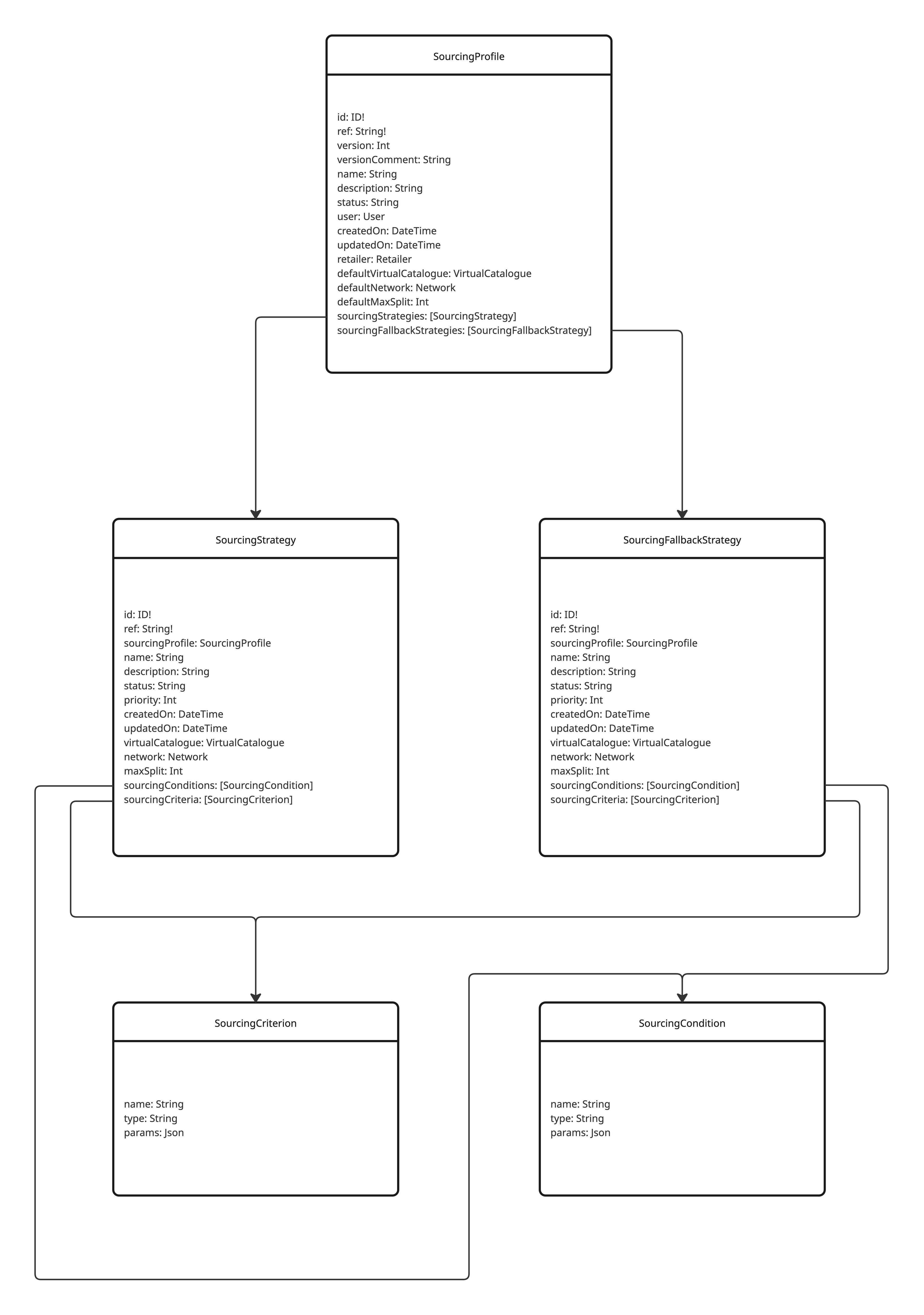
What the Responsive Sourcing Framework Delivers
This example serves as a practical walkthrough of how the Responsive Sourcing Framework is intended to be used to fulfill customer Order by executing sourcing logic defined within the Reference Sourcing Profile.
The diagram below shows the configuration of the Reference Sourcing Profile:
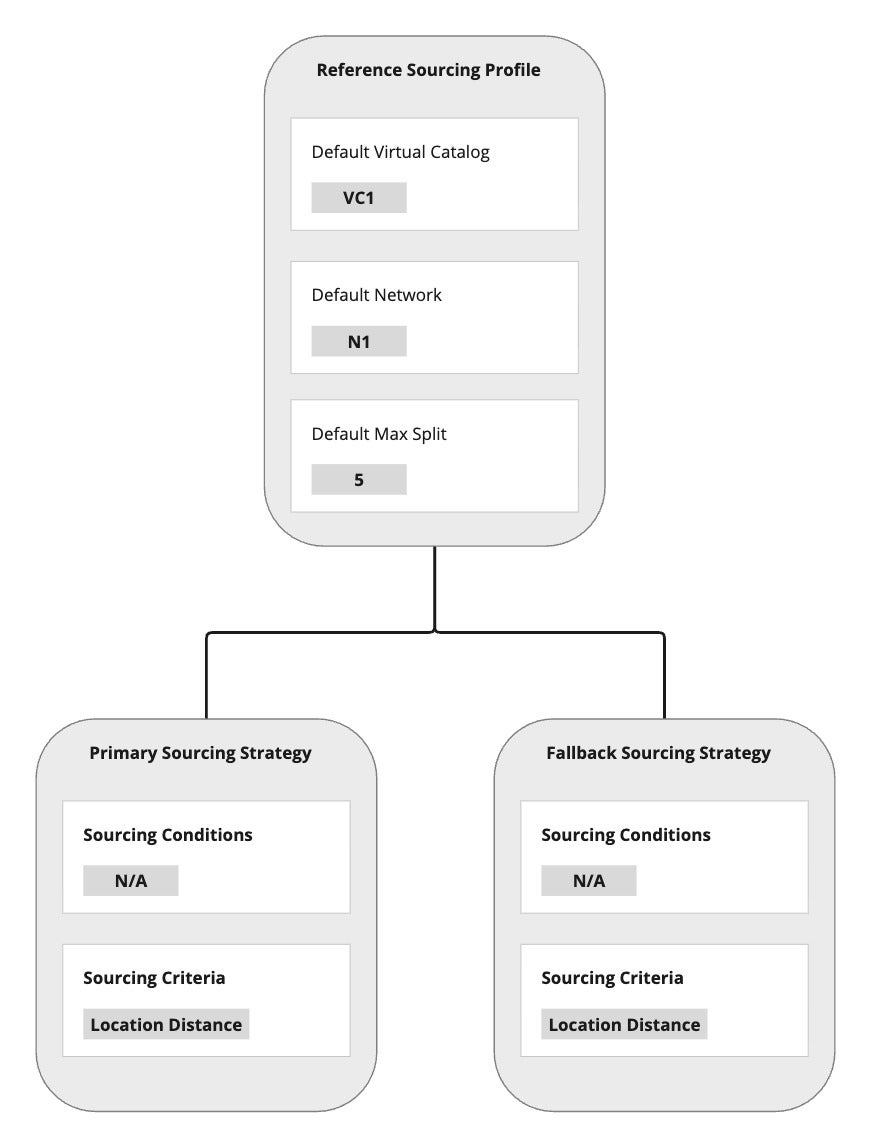
The sourcing logic is designed to evaluate fulfillment Locations with two key goals:
The following diagram shows fulfillment Locations and their Available-to-Sell (ATS) stock:
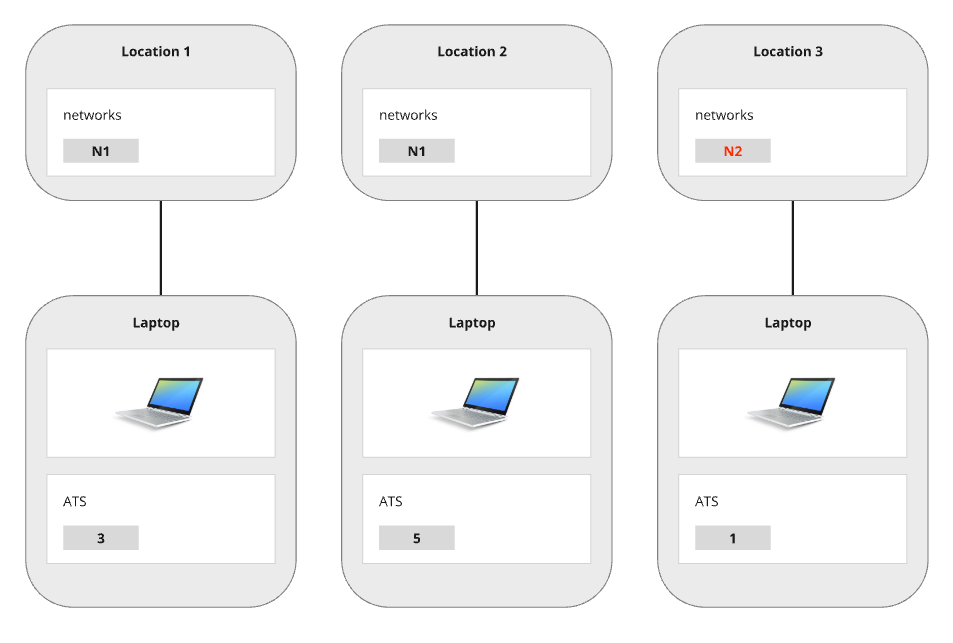
This use case demonstrates how the sourcing logic is applied in a typical fulfillment scenario:
1) Customer Order
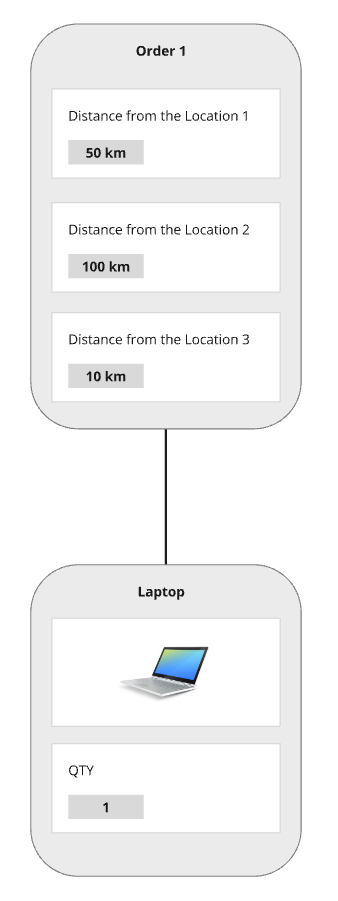
2) Sourcing Profile Triggered
3) Sourcing Strategy Evaluation
`defaultNetwork`, or overridden at the Sourcing Strategy level - `network`)`maxSplit` value)4) Sourcing Conditions Evaluation
5) Sourcing Criteria Evaluation
Calculation | Rating | |
Location 1 | (100* - 50) / 100* | 0,5 |
Location 2 | (100* - 100) / 100* | 0 |
"*" - represents the farthest distance to the delivery destination among the eligible Locations.
6) Fulfillment Decision